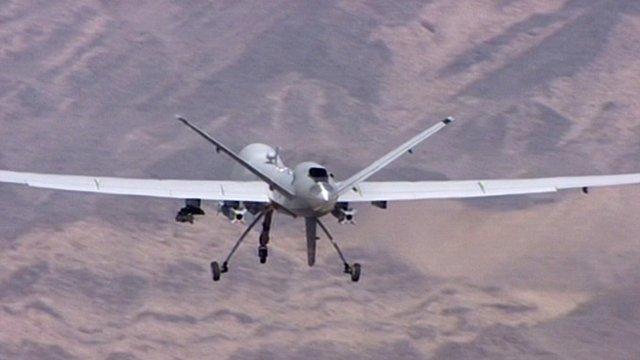Easyjet develops flying robots to inspect aircraft
- Published
New drone technology aides aircraft safety
Easyjet is developing drones to inspect its fleet of Airbus aircraft, and may introduce the flying maintenance robots as early as next year.
The drones will be used to scan and assess Easyjet planes and report damage back to engineers.
The flying robots are being developed by a team that includes experts from the University of Bristol.
Easyjet is also developing virtual reality video technology.
In addition, Easyjet wants apps to help with maintenance, and the airline is fitting "paperless plane" technology. Durable laptop computers will replace printed navigational charts in planes.
"We have examined and assessed cutting edge technology across many different industries and are now applying a range of new technologies to the aviation sector for the first time to help us run our fleet of aircraft more effectively, efficiently and safely," said chief executive Carolyn McCall.
Easyjet plans to test the drones within coming months.
"Aircraft inspection is a great application for drones," said Dr Arthur Richards, head of aerial robotics at the Bristol Robotics Laboratory.
"Coupled with smart navigation and computer vision, they can get accurate data from really awkward places."
The flying robots are being developed by Bristol Robotics Laboratory, a collaboration between University of Bristol and the University of West England.
Drone company Coptercraft and software company Measurement Solutions are also involved in the project.
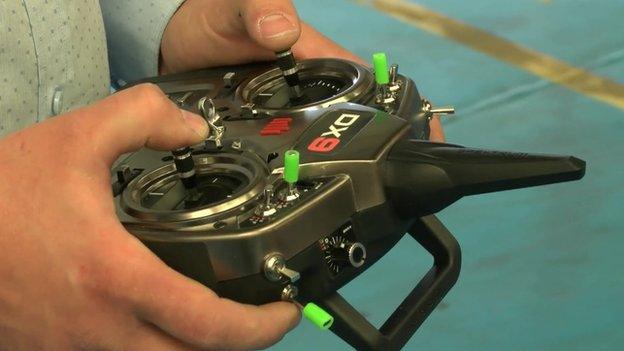
The robot can be remotely controlled, but Easyjet wants to automate drone flights
Laser scans
The drones are fitted with high definition video cameras, but can also use lasers to scan the outside of the aircraft, Easyjet head of engineering Ian Davies told the BBC.
"We could zoom [the laser scanner] up and down the aircraft and map the surface," he said. "If we've mapped the aeroplane we can have a complete history of its full life."
He added that it is safer to have drones working at height than humans having to go up on a rig.
One of the main challenges for the drones is how to get them to work outside in windy conditions, Mr Richards said.
The drones are built to be light in weight, but that can make them vulnerable to gusts of wind on an airfield.
They plan to use research into how animals such as bees and birds cope with blustery weather to "see how nature solves the same problem".
Another challenge is to automate drone flights, he added.
Virtual reality
Easyjet is also hoping to use virtual reality to help sort out technical problems with planes that are a long way from its engineering team.
At the moment engineers and pilots email pictures and call Easyjet's control centre to try to resolve issues over the phone.
But Easyjet is planning to use hi-tech glasses that can relay high definition video images back to base.
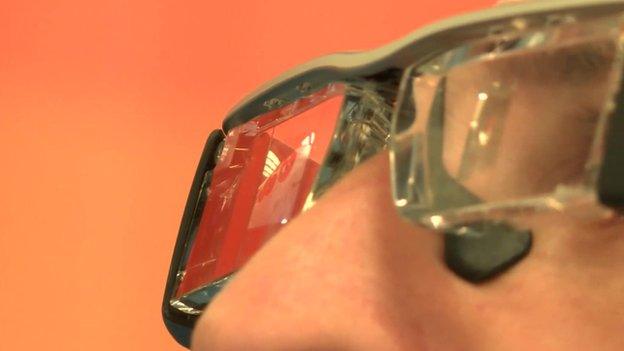
Easyjet is planning to use hi-tech glasses to help spot where an aircraft needs repairs
Engineers could be directed to do repairs by a team looking at the video stream coming from the glasses, Mr Davies said.
The technology also uses "augmented reality", where a computer image is superimposed on the view as seen through the glasses.
For example, an engineer can compare an image of a fuselage projected onto the glasses with the actual fuselage, to see what work needs to be done.
"It's a very simple Robocop outfit people would wear," Mr Davies said. "We are using the human almost like a robot."
The airline wants to use the technology in airports such as Sharm el Sheikh and Tel Aviv.
At the moment, the data is transmitted using 4G, but Easyjet is discussing options for satellite links with communications company Iridium, Mr Davies said.
When choosing the type of glasses to use, Easyjet evaluated Google Glass, but found the technology "too fragile for industrial use", he added.
Interesting drones
There has been a surge in interest in drones in recent years, and they are being developed for a variety of uses.
The United Arab Emirates wants to use small government drones to provide services, like ID-card delivery, by next year.
Google bought solar-powered drone maker Titan Aerospace in April to help the firm's efforts to expand internet access.
Amazon is in the process of testing drones for deliveries, and a photographic drone that uses a dog-lead as a fail-safe has been developed.
- Published24 April 2014

- Published14 April 2014
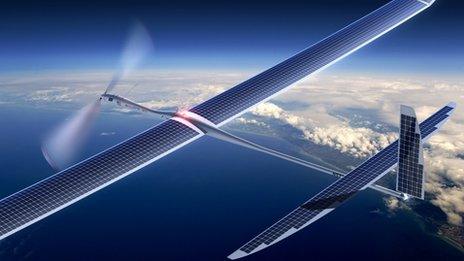
- Published28 March 2014
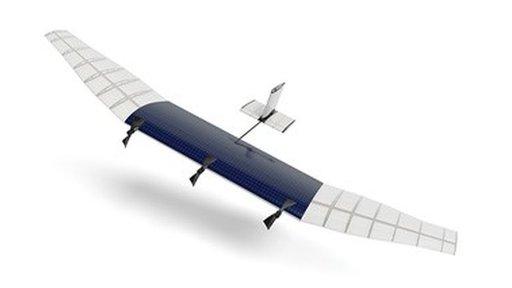
- Published18 December 2013
